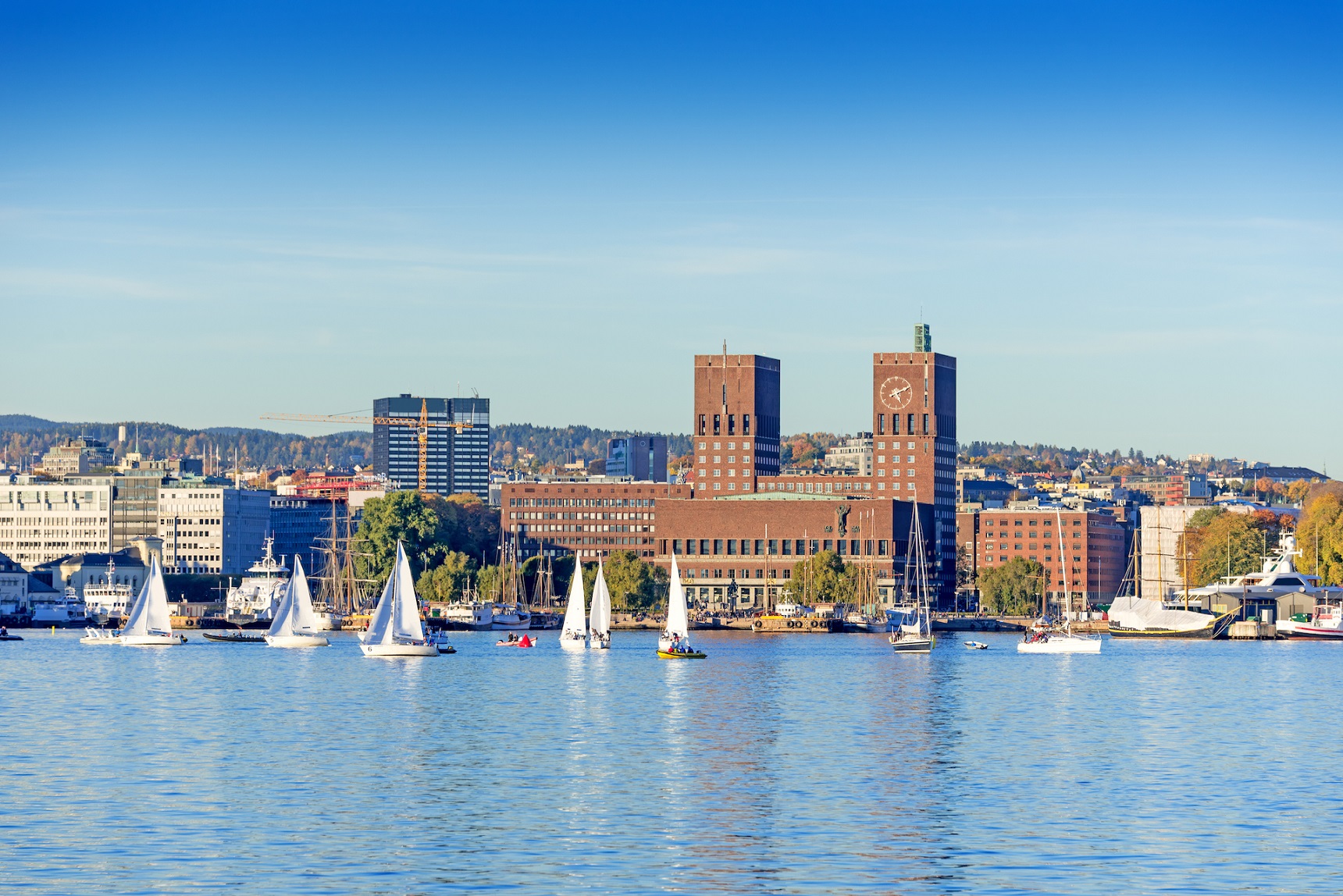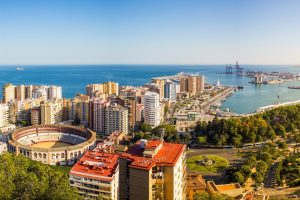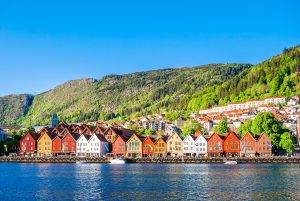Oslo, the capital of Norway, is beautifully situated on the Oslofjord and surrounded by dense forests and rolling hills. The city blends modern design with historic architecture, creating a unique mix of Scandinavian lifestyle and historical depth. Whether you’re admiring ultra-modern buildings like the Opera House, enjoying cozy bars, or strolling through scenic parks – you can experience it all in one day in Oslo. Despite its urban flair, the city always feels relaxed, a bit like a Norwegian wool sweater: warm, welcoming, and simply comforting.
Top Attractions in Oslo
Oslo Opera House
The futuristic Opera House (Norwegian: Den Norske Opera & Ballett) is one of the city’s most iconic landmarks and sits directly on the Oslofjord. Thanks to its sloping marble roof, you can walk all the way to the top and enjoy panoramic views over the shimmering water. Inside, a mix of oak wood and glass creates a modern yet warm atmosphere. The venue hosts concerts and opera performances renowned across Europe for their quality.
Fun Fact: The Opera House won the “World Architecture” award in 2008 – and rightfully so.

Akershus Fortress (Akershus Festning)
Towering above the Oslofjord since the 13th century, the medieval Akershus Fortress has withstood numerous sieges throughout its history. Today, you can explore its old castle walls and learn more about Norway’s royal past. The adjacent castle park offers fantastic views of the harbor – especially magical at sunset. The fortress also houses the Norwegian Defence Museum and is still used for ceremonial state visits.
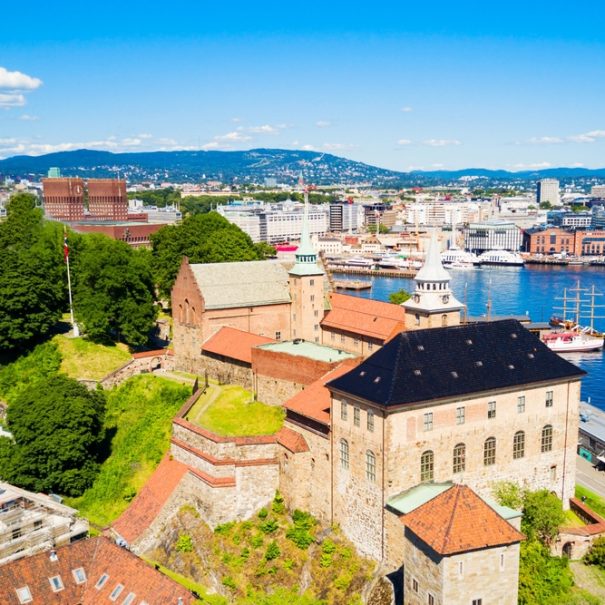
Karl Johans gate & The Royal Palace
Karl Johans gate is Oslo’s most famous shopping and strolling street. It stretches from the central station directly to the majestic Royal Palace, built in the 19th century and still the residence of Norway’s royal family. The daily changing of the guard attracts visitors who want to witness the traditional ceremony. The palace park itself is a green oasis, perfect for leisurely walks.
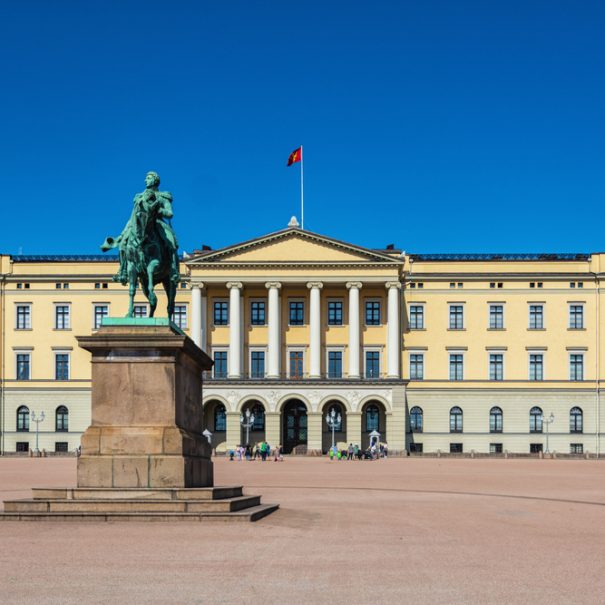
Vigeland Sculpture Park
Located within Frogner Park, the Vigeland Sculpture Park (Norwegian: Vigelandsanlegget) is one of Oslo’s most visited attractions. More than 200 sculptures by artist Gustav Vigeland depict human emotions, relationships, and life stages. A favorite is “Sinnataggen,” a small, angry boy who has become the park’s unofficial star. Best of all: entry is free, and the sprawling park is perfect for relaxing.

Holmenkollen
Holmenkollen is not only the most famous ski jump in the world but also a fantastic viewpoint high above the city. The adjoining ski museum reveals the history of Norwegian winter sports, from the early days of skiing to modern competitions. For thrill-seekers, there’s even a ski jump simulator – sweaty palms guaranteed.
Fun Fact: Holmenkollen is home to the world’s oldest ski museum (founded in 1923).
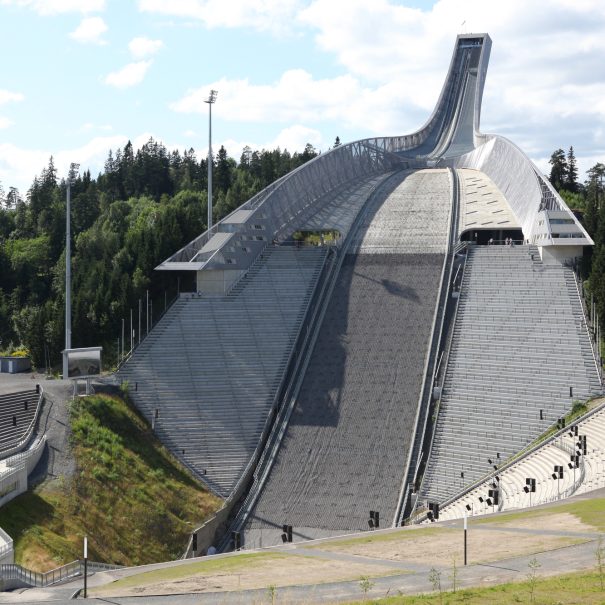
Best Scenic Viewpoints
Ekeberg
The Ekeberg hill offers a fantastic view over Oslo and the fjord. It’s also home to the Ekeberg Sculpture Park, where you’ll encounter works by internationally acclaimed artists while strolling through nature. In the evening, you can admire the city’s twinkling lights – perfect for a romantic date (or to snap photos that will make your friends jealous).
Grefsenkollen
Located a bit outside the center, Grefsenkollen is definitely worth the bus or car ride. Once at the top, you’ll be rewarded with a wide panoramic view of Oslo and the fjord. In summer, it’s a great picnic spot or a place to enjoy local specialties at the nearby restaurant. And if it rains? Do as the Norwegians do: put on a raincoat and enjoy the view anyway.
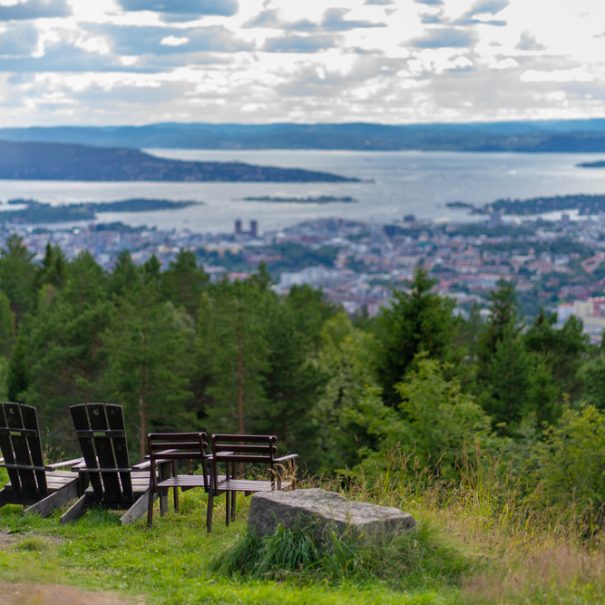
Culinary Highlights for Food Lovers
Mathallen Oslo
In this modern food hall, you’ll find local producers, creative food concepts, and international street food stalls. Be sure to try Norway’s famous “Brunost” (brown cheese), which has a sweet, caramel-like flavor and is often served on waffles. Or go for freshly caught fish from Norwegian waters. You might also try the local hotdog known as “Pølse” – a popular takeaway snack among Norwegians.
Engebret Café
Oslo’s oldest restaurant (founded in 1857) serves traditional dishes in a rustic yet elegant setting. It’s the perfect place to try reindeer steak, homemade meatballs, or hearty fish soup. You can truly feel the café’s long history in every corner of the building.
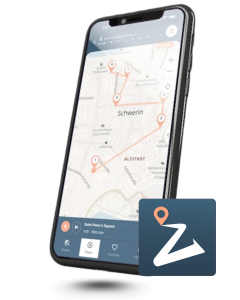
Discover 70+ cities worldwide with professional audio guides – and counting! Thanks to integrated navigation, you’ll easily find your way, even without an internet connection. Whether it’s famous highlights or hidden gems – Plazes brings exciting tours and vivid stories straight to your smartphone. Completely free and no registration required. Download now and get started!
Aker Brygge
Aker Brygge is a waterfront district filled with restaurants, bars, and chic boutiques. Here you can enjoy the sea breeze while savoring seafood specialties. In the evening, the area comes to life as locals and visitors gather for drinks or dinner in a cozy atmosphere.
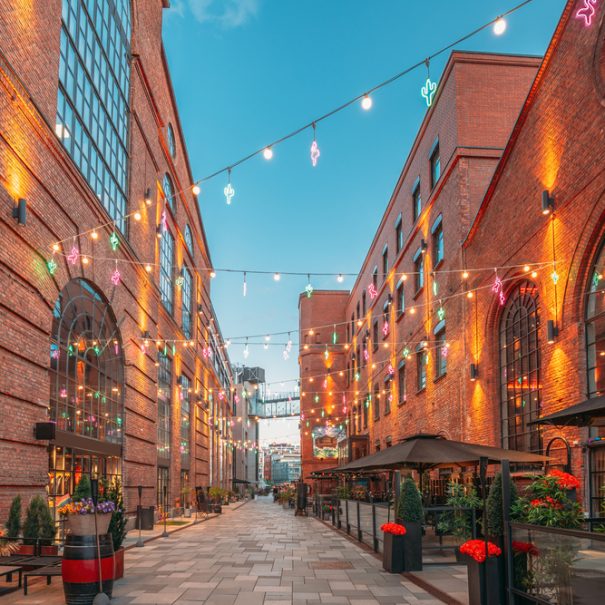
Insider Tips & Hidden Gems
Damstredet and Telthusbakken
These two cobblestone streets with colorful wooden houses exude fairy-tale charm and showcase Oslo’s traditional side. It feels as if time has stood still here. A walk through these lanes is perfect for those seeking a break from the urban hustle. Pro tip: bring your camera – every corner looks like a postcard.
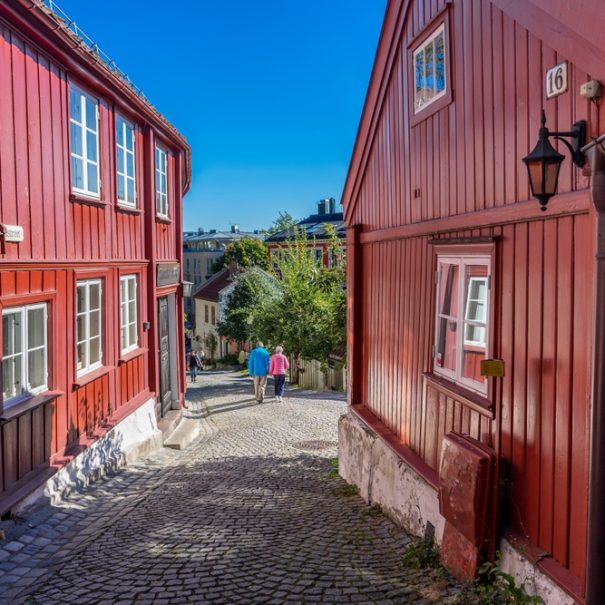
Vulkan Area & Grünerløkka
The former industrial area of Vulkan now hosts creative offices, small shops, and the trendy Mathallen food hall. Right next door is Grünerløkka, a hip neighborhood filled with street art, vintage shops, and cool cafés. If you’re looking for Oslo’s urban flair away from the typical tourist routes, this is the place to be.
Museums for Culture and History Enthusiasts
Fram Museum
Located on the Bygdøy Peninsula, the Fram Museum tells the story of Norwegian polar exploration. You can step aboard the famous 19th-century expedition ship “Fram” and explore its interior. Interactive exhibits bring to life the adventures of Roald Amundsen and Fridtjof Nansen, who once set off in this sturdy wooden ship to the icy Arctic.
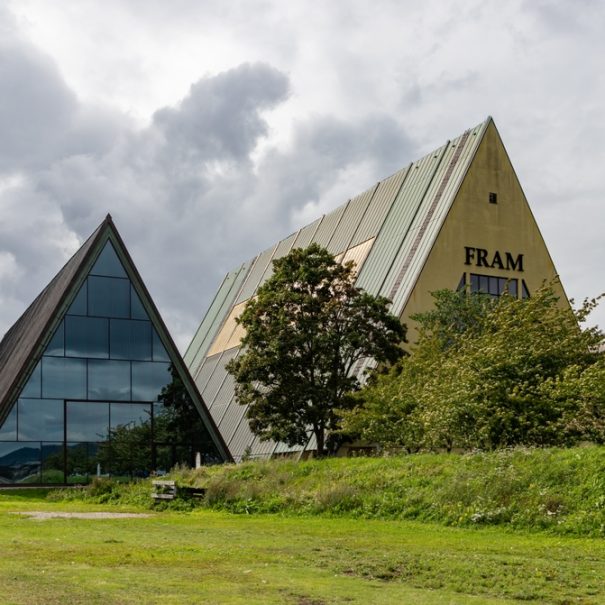
Munch Museum (Munchmuseet)
World-famous for his painting “The Scream,” Norwegian artist Edvard Munch is honored in the new Munch Museum right on the fjord. In addition to iconic works, rotating exhibitions provide insight into the artist’s life and creative process.
Norwegian Museum of Cultural History (Norsk Folkemuseum)
Also on Bygdøy, this open-air museum showcases traditional life in Norway. Numerous historic buildings, including medieval stave churches, have been authentically reconstructed here. Demonstrations and events bring old Norwegian customs to life – it’s like a live history lesson, only prettier and with sheep.
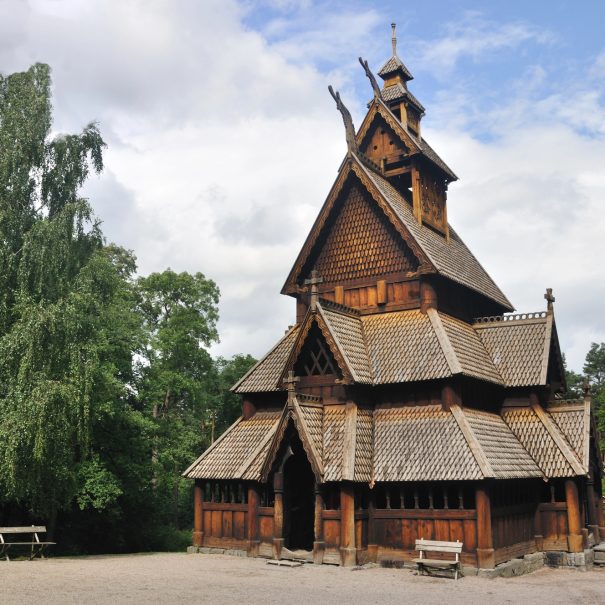
Shopping & Souvenirs
Shopping in Oslo can be a dream come true for design lovers, especially if you’re into Scandinavian interiors and cozy knitwear. Along Karl Johans gate, you’ll find well-known fashion brands alongside typical Nordic home décor shops. For more unique finds, wander through the small boutiques in Grünerløkka. Popular souvenirs include Norwegian sweaters with the iconic “Marius pattern” – so warm, you’ll feel like you’re being hugged by forest elves.
Also great for souvenirs: small troll figurines. In Norway, people truly believe that trolls, while mischievous, bring good luck. For culinary treats, grab some Brunost or reindeer salami, both of which travel well in your suitcase. If you want to give your living room a Nordic upgrade, check out decorative items from brands like Søstrene Grene or HAY.
Tips for Cruise Passengers
If your cruise ship docks in Oslo, you’re in luck – many of the city’s top attractions are just a short walk from the port. Cruise lines often offer shuttle buses into the city center. Alternatively, you can hop on one of the local buses or trams (Trikk), which will take you quickly and reliably around Oslo.
Taxis are convenient but a bit pricey – kind of like a souvenir shop at the North Cape. For short distances, e-scooters are a fun and popular option; you’ll find them on nearly every street corner. If you want to explore the surrounding area, you can rent a car in the city center, but be prepared for paid parking. Don’t worry though – Oslo is so compact that you don’t really need four wheels for most experiences.
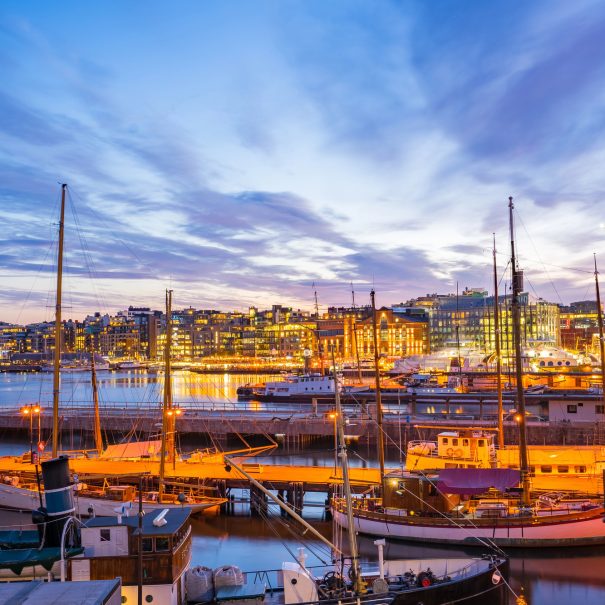
Tips for Solo Travelers
Oslo is a fantastic choice for solo travelers. The city is very safe, and most Norwegians speak excellent English. With a practical 24- or 48-hour ticket, you can ride subways (T-Bane), buses, and ferries to your heart’s content – and soon you’ll feel like a local, especially if you’ve got a hot coffee in hand.
There’s accommodation for every budget, from hostels to boutique hotels. And if you need more tips, just stop by the Oslo Visitor Centre at the central station – they’ve got everything you need for your city adventure: maps, ticket offers, and plenty of insider tips. You’ll also find helpful info on the official tourist site: https://www.visitoslo.com/en/.
Conclusion
Oslo combines Scandinavian coziness with modern urban life and offers a unique mix of culture, nature, and innovation. From the Opera House and Akershus Fortress to the trendy neighborhoods of Grünerløkka and Vulkan – the city reveals a new facet at every turn. Despite its metropolitan vibe, Oslo remains easy to navigate and invites you to explore it at your own pace.
If you need a break in between, you’ll always find a quiet spot in the parks or by the fjord. The warm hospitality of the Norwegians makes you feel right at home. And honestly: the moment you take a bite of a fresh cinnamon bun or sit on the Opera House roof looking out over the fjord – you’ll be smitten. You’re going to love Oslo!
FAQs
1. How much time should you plan for a visit to Oslo?
If you mainly want to see the most famous sights such as the Opera House, Akershus Fortress, and the Vigeland Sculpture Park, two to three days are usually sufficient. For a deeper dive into Norwegian culture—such as visiting multiple museums or exploring the surrounding nature—it’s worth planning at least a week.
2. How well is Oslo connected to public transportation, and is a rental car worth it?
Oslo’s public transportation system is excellent: you can use trams, subways, buses, and ferries to get around the city quickly and conveniently. A rental car is usually unnecessary, especially since parking can be limited and expensive. However, for trips to the nearby countryside, a rental car or an organized day tour can be useful.
3. How expensive is Oslo really, and are there ways to save money?
Oslo is considered a high-cost destination, especially when it comes to food and activities. Still, there are ways to save: many museums offer free admission on certain days or discounted family tickets. You can also benefit from the Oslo Pass, which provides free or reduced admission to many attractions and includes access to public transportation.
4. When is the best time to visit Oslo?
Oslo is worth visiting year-round. In summer (June to August), the weather is mild and many events take place—but it’s also peak season. Spring and autumn are quieter, offer pleasant temperatures, and usually fewer tourists. Those looking for winter magic can enjoy short days, a cozy atmosphere, and possibly snow-covered landscapes.
5. How accessible is the city for people with limited mobility or strollers?
Oslo is generally well equipped for accessibility. Many public transport options (buses, trams, subways) are accessible at street level, and most larger museums and institutions have elevators or ramps. However, older neighborhoods and cobblestone streets may pose some challenges. It’s best to check accessibility details for specific sights in advance or use official websites that list barrier-free options.

